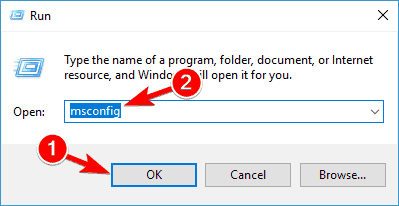My Windows Defender Won T Turn On

Select the Start button Settings Update & Security Windows Security and then Firewall & network protection. Open Windows Security settings; Select a network profile. Under Microsoft Defender Firewall, switch the setting to Off. Turning off Windows Defender Firewall could make your device (and network, if you have one) more vulnerable to unauthorized access. Microsoft Windows 10 users may experience a common problem where Windows Defender won’t start on their system. The issue is often noticed when trying to turn Antivirus Protection on. Instead of the service turning on, the WindowsSystem32 folder will open. The following fixes usually will fix this problem. Fix 1 – Ensure Services are Started.
The above issue, commonly occurs if you have installed a different security product on your system, but you have decided to return back to the default Windows security protection ('Windows Defender' on Windows 10 & Windows 8 or 'Security Essentials' on Windows 7). At this case the (previously) installed security product has modified the Windows Registry, so the default Windows protection cannot be enabled.In other cases, the above issue, can occur if a malicious program has disabled the Windows default protection, in order to compromise your system. Bukhari sharif mp3 urdu. In this tutorial you can find detailed instructions to resolve the following issues with Windows Defender or Security Essentials on Windows 10, 8 & 8.1:1. Windows Defender (or Security Essentials) is disabled and cannot turn on.2. Cannot Enable Windows Defender or Security Essentials.3. When you try to Turn ON the Windows Defender (or the Security Essentials) the system opens at 'system32' folder.4.
Cannot Start the Windows Defender Service.5. Windows Defender is turned off or not working.How to fix: Cannot Enable Windows Defender on Windows 10 or Windows 8.Note:Make sure that you have logged on your computer with an Administrator account, before you continue to the steps below. Scan your computer for viruses.Many viruses or malicious programs compromise your protection by disabling the security product on your system. So, before you continue to troubleshoot the issues descripted in this guide, use this to check and remove viruses or/and malicious programs that may be running on your computer.Step 2: Uninstall any other Security Application from your computer.Make sure that you have uninstalled any other security application from your computer. Also, if you have problems during uninstall process and to ensure that the security application is completely removed from your system, run the. Enable Windows Defender (Security Essentials) from Registry.1.
Open Registry editor. At 'Permissions for Windows Defender' window, click Advanced.5. Click Change Owner.6. Type Administrators and press OK.7. Select the ' Replace owner on subcontainers and objects' checkbox and click Apply.8.
Then double-click to open Administrators entry.9. Select the Full Control checkbox and press OK three (3) times.10. At the right-pane double to open the DisableAntiSpyware key. Change the Value data from 1 to 0 and click OK to enable Windows Defender. Note: If you cannot edit (modify) the value data, then close and re-open Registry Editor.11. Then open the DisableAntiVirus key.
Change the Value data from 1 to 0 and click OK.12. Close registry editor and restart your computer. Normally, after the reboot, Windows Defender should run without issues. Note: If Windows Defender is still Turned OFF, then enable it manually from the control panel.13.
Important: To keep your PC safe from vulnerabilities, perform the same steps again, but this time change the owner back to SYSTEM account (6).You 're done! Let me know if this guide has helped you by leaving your comment about your experience. Please like and share this guide to help others.
Turn on Windows Defender Firewall with Advanced Security and Configure Default Behavior. 2 minutes to read.In this articleApplies to. Windows 10.
Dream theater midi pack. Are you struggling with finding the right notes for your tracks?Then our ultimate MIDI collection might be the answer!This MIDI pack contains a total of 200 key-labeled MIDI files, everything from arps to basslines, chords and melodies.And the best thing is, these types all fit together! If you choose an arp, then we also included the fitting bassline, chord and melody notes. It has never been easier to create an awesome sounding track with these MIDI files.Drag and drop these files into your DAW of choice or use them as inspiration for some new sounds.All files are 100% royalty free and can be used for commercial projects.
Windows Server 2016To enable Windows Defender Firewall with Advanced Security and configure its default behavior, use the Windows Defender Firewall with Advanced Security node in the Group Policy Management console.Administrative credentialsTo complete these procedures, you must be a member of the Domain Administrators group, or otherwise be delegated permissions to modify the GPOs. To enable Windows Defender Firewall and configure the default behavior.Open the Group Policy Management Console to.In the details pane, in the Overview section, click Windows Defender Firewall Properties.For each network location type (Domain, Private, Public), perform the following steps.Note: The steps shown here indicate the recommended values for a typical deployment. Use the settings that are appropriate for your firewall design.Click the tab that corresponds to the network location type.Change Firewall state to On (recommended).Change Inbound connections to Block (default).Change Outbound connections to Allow (default).Related Articles.
- пятница 17 апреля
- 70